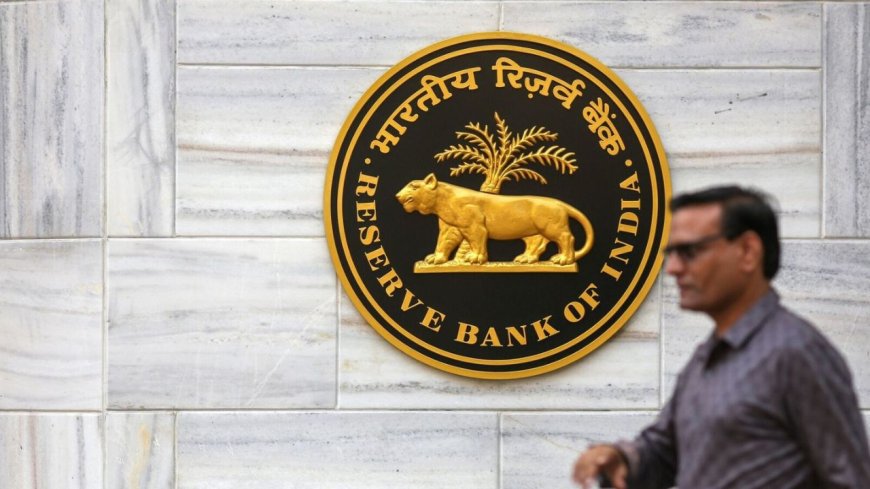More Windfall Ahead for Government? RBI Reviews Capital Framework for Bigger Surplus Transfer
With the RBI reassessing its capital framework, the government could be looking at another windfall surplus. What it means for fiscal math, markets, and monetary stability.

More Windfall Ahead for Government as RBI Reviews Changes to Capital Framework?
Introduction: Another Fiscal Jackpot in the Making?
In a time when the Indian government is balancing a tricky fiscal equation—populist spending, infrastructure push, and pre-election sops—comes a potentially game-changing development: the Reserve Bank of India (RBI) is reviewing its capital framework, yet again. This could mean another handsome windfall transfer to the Centre, akin to the historic payout of ₹1.76 lakh crore in 2019.
The RBI’s internal panel is reportedly looking into redefining the risk buffer and contingency reserves it holds—a technical exercise on paper, but one that has enormous real-world implications. The big question is: Can India’s central bank loosen its purse strings without loosening macroeconomic stability?
What Is the RBI Capital Framework?
The capital framework determines how much reserves the RBI needs to hold for contingencies like currency volatility, interest rate risk, or emergency bailouts. These reserves are drawn from:
-
Contingency Fund (CF)
-
Asset Development Fund (ADF)
-
Revaluation Reserves (Currency, Gold, Foreign Assets)
The framework governs how much of the RBI’s annual surplus (profit) it can retain vs. how much it can transfer to the government as a dividend.
A tight buffer requirement means lower surplus transfers. A relaxed buffer implies higher payouts—a tempting prospect for any cash-hungry government.
The 2019 Precedent: Bimal Jalan Committee
The last big overhaul came in 2019 when the Bimal Jalan committee revised the buffer lower, enabling a record surplus transfer of ₹1.76 lakh crore to the Centre. It set the Contingent Risk Buffer (CRB) at 5.5–6.5% of RBI’s balance sheet, down from a higher pre-2019 range.
Now, the RBI appears to be re-examining that threshold in the context of macroeconomic shifts—larger balance sheets, global banking volatility, and a bigger government appetite for non-tax revenue.
Why Is the Review Happening Now?
1. Macro Context Has Changed
-
RBI’s balance sheet has expanded significantly with greater forex reserves and more domestic asset holdings.
-
Inflation is stabilizing, interest rates have plateaued, and the fiscal deficit—though elevated—is improving gradually.
-
Global central banks are being forced to recapitalize or balance fiscal-monetary priorities post-COVID.
2. Pre-Election Spending & Revenue Gap
-
With general elections due in 2026, the government is looking for non-tax sources to fund welfare schemes, food subsidy expansions, and infrastructure pushes.
-
Capital inflows and disinvestment plans are facing delays—raising the stakes for windfall avenues.
3. Market Liquidity and Confidence
-
The RBI may argue that excess capital hinders optimal monetary transmission.
-
Freeing up reserves allows better capital efficiency and liquidity in the system without printing more money.
What’s at Stake? The Numbers Behind the Buzz
As of FY2025, the RBI’s balance sheet is over ₹70 lakh crore. Even a 1% reduction in the risk buffer threshold can free up ₹70,000 crore+ for surplus transfer.
Hypothetical Scenarios:
| Risk Buffer % | Potential Transfer (₹ Crore) |
|---|---|
| 6.5% (current upper limit) | ₹0 (no change) |
| 5.5% (current lower limit) | ₹70,000+ |
| 5.0% (possible new floor) | ₹1,40,000+ |
This windfall could make a huge difference to government books—especially when facing subsidy burdens, low disinvestment receipts, and rural job scheme expansions.
Arguments For a Lower Buffer
Excessive Conservatism: India’s buffer is higher than several global central banks, including the U.S. Fed and ECB, relative to GDP.
Higher FX Reserves: With forex reserves over $645 billion, India has cushion against currency volatility.
Fiscal Rebalancing Need: Government spending on infra, health, defense, and subsidies needs support from all revenue avenues.
Efficient Capital Allocation: Retaining funds on RBI books when they can be deployed for productive government spending may be inefficient.
Arguments Against It
Global Financial Fragility: The recent spate of U.S. regional bank collapses and Credit Suisse's bailout shows risk is real and unpredictable.
Credibility of Central Bank: Frequent tweaking of reserve norms may erode RBI’s perception as an independent institution.
Inflation Risks: Larger payouts to the Centre could indirectly lead to inflationary spending, especially if monetized.
One-Time Nature: The transfer is not recurring—it may fund a year’s budget hole but not structural expenditure gaps.
Market Impact: What Investors Should Watch
1. Bond Markets
-
A larger RBI transfer can reduce government borrowing needs, calming bond yields.
-
However, if seen as monetizing the deficit, it could spook foreign investors.
2. Equity Markets
-
Infrastructure, railways, defense, and capital goods stocks could benefit from more government spending.
-
PSU banks may rally on better capital inflows.
3. Currency & Forex
-
A large surplus may signal stable macro policies, supporting the rupee in the short term.
-
But if perceived as politically motivated, it may hurt sentiment among global rating agencies.
How Should Investors React?
Here’s a checklist for retail and institutional investors:
Track fiscal deficit projections: A lower deficit via RBI windfall is a strong signal for bonds and PSU-linked equities.
PSU Banks & Infra Stocks: If surplus translates into more capex, expect a tailwind in these sectors.
Watch for inflation: If liquidity expands too fast, look to hedge via gold, real assets, and defensive stocks.
Be wary of short-term sugar rush: A one-time windfall doesn’t replace structural reforms or recurring revenues.
Will the Transfer Actually Happen?
The RBI, under Governor Shaktikanta Das, has been cautious yet cooperative with the government. The central bank has transferred ₹87,416 crore in FY2024, higher than FY2023, but still within safe thresholds.
If the review leads to a lower CRB or revaluation gain unlocks, the FY2025 transfer could cross ₹1 lakh crore, giving the Centre critical room ahead of the Union Budget 2026.
Global Comparisons: Are Other Central Banks Doing the Same?
-
U.S. Federal Reserve remits most of its profits to the U.S. Treasury, but has recently recorded losses due to bond valuation drops.
-
Bank of England is seeking capital injections from the UK Treasury.
-
European Central Bank has also flagged capital adequacy issues amid bond depreciation.
So, India’s RBI—despite global pressures—remains relatively strong and surplus-generating. However, prudence must guide generosity.
Windfall or Warning Sign?
India’s economic story in 2025 is one of optimism laced with fiscal caution. The RBI’s potential relook at the capital framework signals both confidence in macroeconomic stability and a pragmatic revenue strategy by the Centre.
Yet, we must tread carefully.
Short-term fiscal relief shouldn’t come at the cost of long-term credibility. The RBI is not a fiscal arm of the government—it’s an inflation-targeting, financial stability guardian.
If done transparently, with clear boundaries, a calibrated windfall can boost India’s economy without denting its institutional strength.
But anything beyond that—and it risks becoming a political tool rather than a monetary buffer.
What's Your Reaction?
 Like
0
Like
0
 Dislike
0
Dislike
0
 Love
0
Love
0
 Funny
0
Funny
0
 Angry
0
Angry
0
 Sad
0
Sad
0
 Wow
0
Wow
0












































































